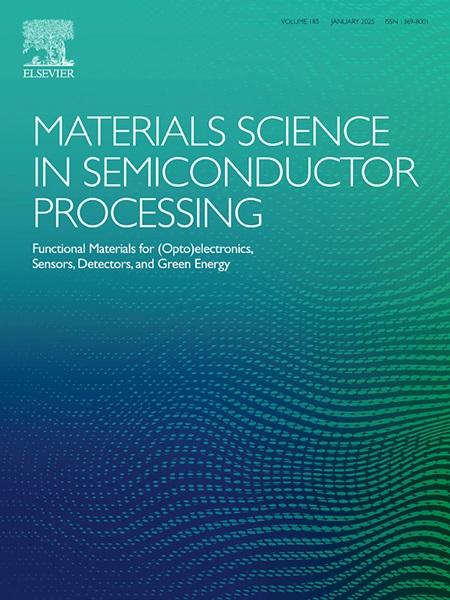A first-principles study of the structural evolution and strain-induced metallic properties of the 2D cubic III-N (X = Al, Ga) intercalated structures
IF 4.2
3区 工程技术
Q2 ENGINEERING, ELECTRICAL & ELECTRONIC
引用次数: 0
Abstract
The application of dimensionality reduction significantly enhances the utility of these materials in the semiconductor domain. Bulk AlN and GaN are wide-bandgap semiconductors, yet they transform into narrow-bandgap semiconductors when structured into two-dimensional (2D) configurations. The innovation in designing and synthesizing novel 2D intercalated layer structures enables superior control over electrical and optical properties compared to their single-phase pure materials. The materials formed by (111)-oriented AlN and GaN can be structured into 2D heterostructures, showcasing remarkable structural stability and undergoing a semiconductor-to-metallic transition under compressive stress. Additionally, optical analyses reveal that GaN-AlN-GaN intercalated structures exhibit superior light absorption capacity and reflectivity compared to AlN-GaN-AlN configurations. Our research predicts that 2D cubic III-N (X = Al, Ga) intercalated structures will offer profound insights into the fundamental mechanisms of these materials and pave the way for enhancing next-generation electronic and optoelectronic devices.

二维立方III-N (X = Al, Ga)插层结构的结构演化和应变诱导金属性能的第一性原理研究
降维技术的应用大大提高了这些材料在半导体领域的应用价值。块状氮化镓和氮化镓是宽带隙半导体,但当它们被结构成二维(2D)配置时,它们会转变为窄带隙半导体。与单相纯材料相比,设计和合成新型2D插层结构的创新使其在电学和光学性能方面具有更好的控制能力。由(111)取向AlN和GaN形成的材料可以形成二维异质结构,表现出显著的结构稳定性,并在压缩应力下经历半导体到金属的转变。此外,光学分析表明,与AlN-GaN-AlN结构相比,GaN-AlN-GaN插层结构具有更好的光吸收能力和反射率。我们的研究预测,二维立方III-N (X = Al, Ga)插层结构将为这些材料的基本机制提供深刻的见解,并为增强下一代电子和光电子器件铺平道路。
本文章由计算机程序翻译,如有差异,请以英文原文为准。
求助全文
约1分钟内获得全文
求助全文
来源期刊

Materials Science in Semiconductor Processing
工程技术-材料科学:综合
CiteScore
8.00
自引率
4.90%
发文量
780
审稿时长
42 days
期刊介绍:
Materials Science in Semiconductor Processing provides a unique forum for the discussion of novel processing, applications and theoretical studies of functional materials and devices for (opto)electronics, sensors, detectors, biotechnology and green energy.
Each issue will aim to provide a snapshot of current insights, new achievements, breakthroughs and future trends in such diverse fields as microelectronics, energy conversion and storage, communications, biotechnology, (photo)catalysis, nano- and thin-film technology, hybrid and composite materials, chemical processing, vapor-phase deposition, device fabrication, and modelling, which are the backbone of advanced semiconductor processing and applications.
Coverage will include: advanced lithography for submicron devices; etching and related topics; ion implantation; damage evolution and related issues; plasma and thermal CVD; rapid thermal processing; advanced metallization and interconnect schemes; thin dielectric layers, oxidation; sol-gel processing; chemical bath and (electro)chemical deposition; compound semiconductor processing; new non-oxide materials and their applications; (macro)molecular and hybrid materials; molecular dynamics, ab-initio methods, Monte Carlo, etc.; new materials and processes for discrete and integrated circuits; magnetic materials and spintronics; heterostructures and quantum devices; engineering of the electrical and optical properties of semiconductors; crystal growth mechanisms; reliability, defect density, intrinsic impurities and defects.
 求助内容:
求助内容: 应助结果提醒方式:
应助结果提醒方式:


